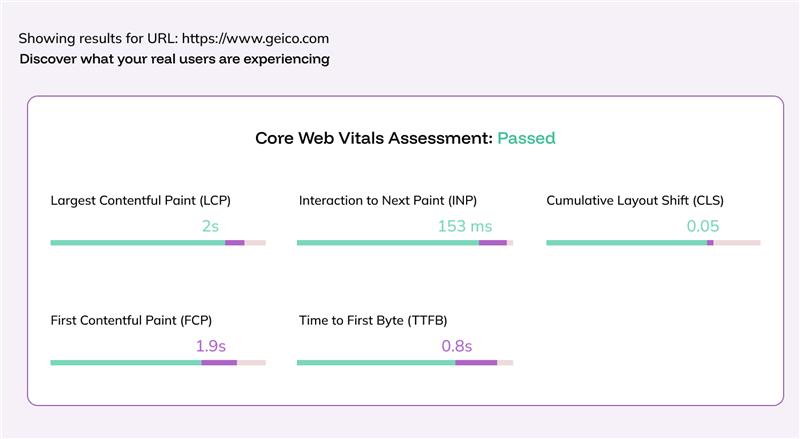Home / Blog / SEO for eCommerce Websites: A Complete Guide to Boost Traffic & Sales
Content Marketing Conversion Rate Optimization digital marketing ecommerce Go Fish Digital seo
SEO for eCommerce Websites: A Complete Guide to Boost Traffic & Sales

Published: September 23, 2025
Share on LinkedIn Share on Twitter Share on Facebook Click to print Click to copy url

Contents Overview
Why SEO Matters for eCommerce Growth
For eCommerce brands, SEO is not just about climbing search rankings. It is about being present at the exact moment customers are looking for products like yours. Search is often the first step in a shopping journey, and the brands that show up consistently win the click, the sale, and ultimately, the loyalty.
Unlike paid media, SEO compounds. Each improvement, whether it is a cleaner site structure, faster load speed, or better keyword targeting, builds on the last. Over time, this lowers acquisition costs while increasing return on investment. A strong SEO program ensures that your products appear where customers are searching, that your site performs well across devices, and that your brand earns trust before a competitor gets the chance.
This article explores the full playbook for eCommerce SEO: from foundational fixes that every site needs, to advanced strategies that help brands dominate in crowded markets.
Building the Foundations of eCommerce SEO
Before experimenting with personalization, popups, or advanced content strategies, every eCommerce site needs a strong foundation. Without it, even the most creative tactics will struggle to deliver results. Think of your site as a storefront: if the shelves are disorganized, the aisles are cluttered, and the signage is confusing, shoppers will leave no matter how good the promotion is.
A strong SEO foundation ensures that search engines can crawl your site efficiently, users can navigate it easily, and every product page has the potential to rank for the right queries. It also sets the stage for more advanced efforts, since tactics like personalization or seasonal campaigns are far more effective when the basics, keywords, architecture, and technical health, are already in place.
Keyword Research That Matches Intent
Not all search queries are created equal. Category pages often align with broad buyer-intent keywords like “women’s running shoes.” Product pages capture more specific transactional searches such as “Nike Pegasus 40 women’s size 8.” Informational content fits queries like “how to clean running shoes” or “best shoes for marathon training.”
Winning SEO starts with mapping the right keywords to the right pages. Long-tail keywords may bring in smaller search volumes, but they typically convert better because they reflect clear purchase intent. Use tools like Ahrefs or Google Keyword Planner to surface these opportunities.
Site Architecture That Works for Shoppers and Search Engines
Shoppers need easy navigation, and search engines reward clear site structures. A hierarchy like Home > Category > Subcategory > Product makes browsing intuitive and ranking more likely. Adding breadcrumbs, keeping URLs short, and submitting an XML sitemap all reinforce crawlability. Avoid orphan pages or overly complex navigation that buries products.
Technical SEO That Eliminates Hidden Barriers
Even the best content can fail if technical SEO is ignored. Duplicate product pages, broken canonical tags, and crawl errors can quietly damage performance. Key areas to prioritize include:
- Correct canonicalization for product variations.
- Schema markup for products, reviews, FAQs, and breadcrumbs.
- Eliminating crawl errors in Google Search Console.
- Ensuring robots.txt does not block essential assets
Solid technical SEO makes it easier for search engines to understand your site and display your products accurately.
Quick Hit: 10-Point eCommerce SEO Checklist
- Research long-tail buyer-intent keywords.
- Map keywords to categories, products, and content.
- Use a clean navigation structure.
- Add product schema, review schema, and FAQ schema.
- Optimize for mobile-first indexing.
- Compress images and enable lazy loading.
- Use HTTPS and trust badges.
- Add unique product descriptions.
- Encourage reviews and user-generated content.
- Continuously A/B test CTAs and page layouts.
Personalization as an SEO Advantage
Personalization is often viewed only through the lens of conversion, but it also strengthens SEO. When shoppers spend more time on your site, view more pages, and return for repeat sessions, search engines interpret those signals as indicators of relevance and quality.
One of the simplest ways to personalize is through product recommendations. By leveraging browsing history, AI tools, and past purchases, you can serve tailored suggestions that not only raise average order value but also keep shoppers clicking through multiple product pages.
Another approach is dynamic content. Personalized banners, location-based offers, and smart merchandising create a shopping experience that feels unique to each visitor. When customers see content that resonates with their intent or location, they are less likely to bounce and more likely to continue exploring.
The result is a win on both fronts: higher engagement metrics that support SEO visibility and stronger conversion rates that improve revenue. Put simply, when shoppers stick around, search engines notice.
Popups, Mobile Experience, and Site Speed
Popups, when done right, can reduce abandonment and capture leads. Exit-intent offers, cart recovery prompts, and signup incentives all work, provided they do not interfere with Core Web Vitals. Tools like OptiMonk balance personalization with SEO performance.
On mobile, speed is everything. Responsive design, simple menus, and tap-friendly CTAs improve usability, while lazy loading, compressed images, and CDNs accelerate performance. Tools like Google PageSpeed Insights, GTmetrix, and Lighthouse highlight where improvements are needed.

Learn more about the top SEO tools for eCommerce here.
Building Trust and Credibility
Trust is both a ranking factor and a conversion driver. Shoppers are more likely to buy from a site that feels secure, transparent, and reputable. At a minimum, that means always using HTTPS, displaying recognizable trust badges at checkout, and highlighting authentic customer reviews. These simple elements reduce hesitation and signal to search engines that your site is reliable.
Beyond the basics, Google looks closely at credibility signals through its E-E-A-T framework: Experience, Expertise, Authoritativeness, and Trustworthiness. Strong E-E-A-T shows that your brand is not only publishing content but doing so with depth, accuracy, and authority. Adding author bios, citing reputable sources, and maintaining consistent brand expertise all contribute to stronger rankings.
Third-party validation is another layer of proof. Media coverage, industry certifications, or partnerships reinforce that your brand is credible in the eyes of both shoppers and search engines. When visitors see these signals, they are more comfortable completing a purchase, and when Google sees them, it is more likely to reward your site with higher visibility.
Optimizing Conversion Elements
CTAs can make or break conversions. They are often the final nudge that turns a visitor into a customer, so small details have an outsized impact.
Placement is one of the biggest variables. A CTA above the fold ensures immediate visibility, but repeating it throughout the page captures users who need more context before acting. Many high-performing eCommerce pages use multiple CTAs, at the top, mid-scroll, and near the bottom, each reinforcing the same action.
Copy is just as important. Generic phrases like “Submit” or “Click Here” rarely perform well because they fail to highlight the benefit. Strong CTAs use clear, benefit-driven language such as “Start Your Free Trial,” “Add to Cart with Free Shipping,” or “Unlock 20% Off Today.” Visitors should instantly understand what they get when they click.
Color and design also play a role. Contrasting colors help CTAs stand out, while consistent styling across devices builds trust. Buttons that look tappable on mobile and easy to see against background elements reduce friction.
The most effective CTA strategies rely on testing. A/B tests can measure the impact of changing a button color, adjusting copy, or moving placement. Even small adjustments can yield measurable results. Platforms like Optimizely or VWO make it simple to test variations and uncover what resonates with your audience.
Advanced Content and Internal Linking
On-page SEO basics such as titles, descriptions, and ALT text still matter. But structured internal linking is just as important. Linking category pages to products, and products to related blog content, creates topical authority.
Category pages should include keyword-rich descriptions and FAQs, while product pages need unique descriptions, images, and reviews to avoid duplicate content issues.

Leveraging Engagement and Seasonal Content
Engagement is one of the strongest signals you can send to both shoppers and search engines. Features like live chat reduce bounce rates by answering questions in real time, while user-generated content (UGC) such as reviews, Q&A, or customer-submitted photos adds fresh, keyword-rich material to your product pages. UGC is especially powerful because it blends authenticity with SEO value, creating a steady stream of new content that search engines reward.
Seasonal campaigns are another opportunity to build long-term visibility. Instead of creating one-off holiday pages each year, invest in evergreen landing pages for major events like Black Friday, Cyber Monday, or Valentine’s Day. Refresh these annually with updated offers, copy, and visuals. Over time, they accumulate backlinks and authority, ranking higher year after year.
Why Testing Never Stops
A/B testing is not just a conversion rate optimization tactic. It also strengthens SEO by improving engagement metrics such as dwell time, click-through rate, and bounce rate, all factors search engines consider when assessing relevance. Testing headlines, layouts, and CTAs can reveal small changes that drive measurable gains in both visibility and conversions.
The most successful eCommerce brands treat SEO as an ongoing experiment rather than a one-time fix. Platforms like Optimizely, VWO, and Adobe Target make it easy to run controlled experiments, gather insights, and roll out the winning variations sitewide.
FAQs About eCommerce SEO
What is the most important SEO factor for eCommerce sites?
Technical SEO and site speed are critical because they impact both rankings and conversions.
How long does it take to see results from eCommerce SEO?
Most brands see progress in 3 to 6 months, though highly competitive categories can take longer.
Do product descriptions impact SEO?
Yes. Unique product descriptions are essential. Duplicate manufacturer feeds can hurt rankings.
Should I create separate landing pages for holiday promotions?
Yes. Evergreen seasonal pages build authority over time and perform better year after year.
Does AI search impact eCommerce SEO?
Yes. Optimizing content for FAQs and topical authority increases the chance of being cited in AI-driven results.
The Bottom Line
eCommerce SEO is not a single tactic. It is a system that combines technical fixes, speed optimization, compelling content, personalization, and constant testing. Brands that invest in SEO earn sustained visibility, higher conversions, and trust that lasts well beyond one transaction.
Ready to scale your results? Learn more about Go Fish’s eCommerce SEO services.

About Emily Kochanek
MORE TO EXPLORE
Related Insights
More advice and inspiration from our blog
Ignoring Local SEO in 2026 Is Costing You Customers
Go Fish Digital shares expert local SEO strategies for 2026 and...
Celeste Rodriguez| November 14, 2025
SEO for Enterprise Businesses: Scalable Strategies that Drive Revenue
Discover how enterprise brands scale SEO with governance, automation, and cross-team...
Kimberly Anderson-Mutch| November 05, 2025
7 Ways to Use the Holidays to Build Links and Authority
Discover proven digital PR holiday strategies that earn coverage, build links,...
Lanie Martin| November 04, 2025





